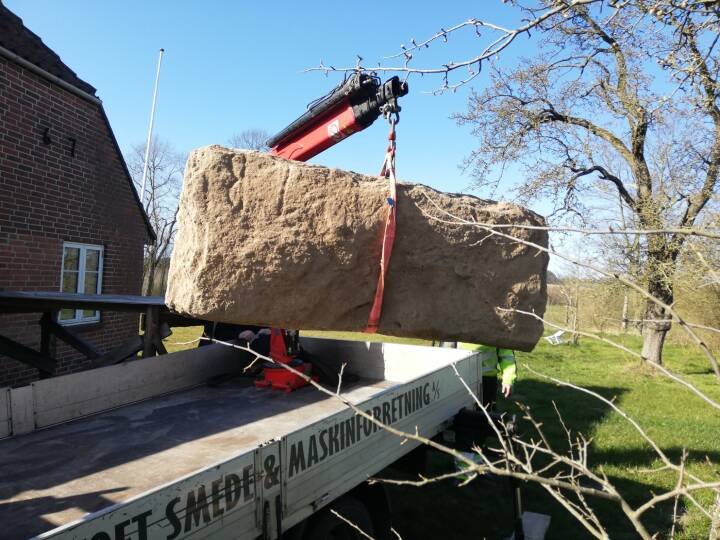The old linoleum kitchen floors of a couple's home in the Danish village of Mosekaer, just outside the city of Randers, were being removed when they stumbled upon a huge rune stone, weighing about 900 kg.
One of the earliest rune stones in Denmark may have been unintentionally discovered by Lene Brandt and her husband, Anders Nielsen, and measured two meters in length and 80 cm in width.
It has been designated a danefæ, or treasure, by the national museum, Nationalmuseet, which is currently putting much effort into figuring out its precise age. The five runes carved on the stone's surface either start or terminate the inscription, depending on the stone's age. The stone's age is important since it determines whether the five runes carved on it begin or end the inscription.
The five runes, which are pronounced "aft bi," mean "after B" in English. Rune stones were frequently created to commemorate notable people, and in this case, the inscription may be referring to a person by the names of Bjrn, Bjarne, or Birk.
The stone most certainly belongs to Denmark's first set of rune stones, making it a very uncommon discovery if the runes indicate the beginning of the text.
Anybody interested in runes should pay special attention to the area near Randers because up to 44 runestones have been found there. Rune, which means "hidden knowledge and wisdom," is an Old Norse word.
Lisbeth Imer, a senior researcher and runologist at the National Museum, estimates that just 10 to 20 rune stones from the 700s–800s have been discovered in Denmark. These early stones are especially interesting because there are only about 200 known Viking Age rune stones dispersed over the country, with the earliest dating to the 700s and the most recent to the 900s. The renowned Jelling Stones, for instance, were built around 965.
The Jelling stones are entire, in their original site, and referenced in historical documents; the Randers rune stone may be older than these, but they cannot be directly compared. In contrast, just a little section of the inscription is still visible on the Randers stone, which is a fragment.
The rune stone is being kept at Museum Stjylland as it waits for additional analysis to establish its age and perhaps shed more light on the history of the Vikings.









